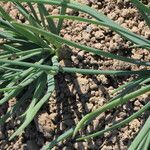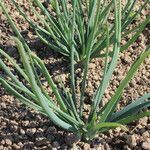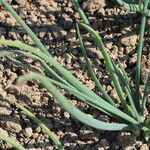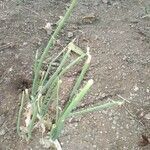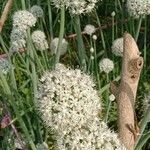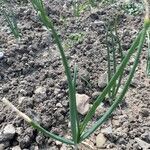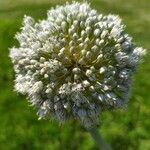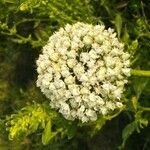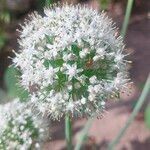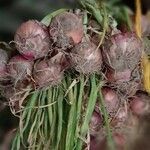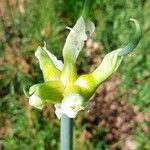| Therapeutic use
|
Abscess (bulb), Anthelmintics (bulb), Anti-bacterial agents (bulb), Antifungal agents (bulb), Anti-inflammatory agents (bulb), Antinematodal agents (bulb), Antineoplastic agents (bulb), Antipyretics (bulb), Antirheumatic agents (bulb), Antiviral agents (bulb), Aphrodisiacs (bulb), Appetite stimulants (bulb), Arthralgia (bulb), Asthma (bulb), Atherosclerosis (bulb), Biliary tract diseases (bulb), Bronchitis (bulb), Cholera (bulb), Colic (bulb), Common cold (bulb), Cough (bulb), Diabetes mellitus (bulb), Diarrhea (bulb), Digestive system diseases (bulb), Diuretics (bulb), Dysentery (bulb), Dyspepsia (bulb), Dyspnea (bulb), Earache (bulb), Eczema (bulb), Edema (bulb), Emaciation (bulb), Endophthalmitis (bulb), Epilepsy (bulb), Epistaxis (bulb), Exanthema (bulb), Expectorants (bulb), Fever (bulb), Fibrinolysis (bulb), Flatulence (bulb), Furunculosis (bulb), Heart diseases (bulb), Hemorrhoids (bulb), Hiccup (bulb), Hypercholesterolemia (bulb), Hypoglycemic agents (bulb), Hypotension (bulb), Hysteria (bulb), Immunosuppressive agents (bulb), Insecticides (bulb), Intestinal diseases (bulb), Counterirritant (bulb), Jaundice (bulb), Leprosy (bulb), Malaria (bulb), Menstruation-inducing agents (bulb), Mental disorders (bulb), Nervous system diseases (bulb), Neuralgia (bulb), Obesity (bulb), Paralysis (bulb), Parasympatholytics (bulb), Pelvic pain (bulb), Pharyngitis (bulb), Increase physical endurance, strength and stamina (bulb), Psychophysiologic disorders (bulb), General tonic for rejuvenation (bulb), Scorpion stings (bulb), Sinusitis (bulb), Skin diseases (bulb), Splenomegaly (bulb), Tuberculosis (bulb), Urinary bladder calculi (bulb), Vaginal diseases (bulb), Vomiting (bulb), Depurative (bulb), Antiviral agents (leaf), Cholera (leaf), Jaundice (leaf), Anti-poisoning (leaf), Disinfectant (root), Abortifacient agents (seed), Antinematodal agents (seed), Dental caries (seed), Eczema (seed), Freckles (seed), Menstruation-inducing agents (seed), Insecticides (stem), Cold Remedy (unspecified), Ear Medicine (unspecified), Febrifuge (unspecified), Misc. Disease Remedy (unspecified), Abscess (unspecified), Ache(Ear) (unspecified), Ache(Stomach) (unspecified), Albuminuria (unspecified), Alopecia (unspecified), Anasarca (unspecified), Antiseptic (unspecified), Apertif (unspecified), Aphrodisiac (unspecified), Arteriosclerosis (unspecified), Bactericide (unspecified), Bile (unspecified), Bite(Snake) (unspecified), Bright's Disease (unspecified), Bronchitis (unspecified), Bubo (unspecified), Cancer (unspecified), Cancer(Liver) (unspecified), Carminative (unspecified), Cataract (unspecified), Catarrh (unspecified), Chest (unspecified), Cold (unspecified), Tuberculosis (unspecified), Cough (unspecified), Digestive (unspecified), Diphtheria (unspecified), Diuretic (unspecified), Dropsy (unspecified), Drowning (unspecified), Dysentery (unspecified), Ear (unspecified), Edema (unspecified), Emmenagogue (unspecified), Enema (unspecified), Expectorant (unspecified), Fever (unspecified), Flatulence (unspecified), Flu (unspecified), Fracture (unspecified), Hangover (unspecified), Hepatosis (unspecified), Inflammation (unspecified), Orchitis (unspecified), Pectoral (unspecified), Poison (unspecified), Poultice (unspecified), Preventitive (unspecified), Preventitive(Bite(Snake)) (unspecified), Repellant (unspecified), Repellant(Bat) (unspecified), Repellant(Snake) (unspecified), Scarlatina (unspecified), Scurvy (unspecified), Sedative (unspecified), Soporific (unspecified), Sore(Throat) (unspecified), Stomachic (unspecified), Tumor (unspecified), Venereal (unspecified), Vermifuge (unspecified), Wart (unspecified), Wound (unspecified), Colic (unspecified), Diaphoretic (unspecified), Hydropsy (unspecified), Hyperglycemia (unspecified), Piles (unspecified), Rheumatism (unspecified), Sting(Scorpion) (unspecified), Stimulant (unspecified), Suppurative (unspecified), Analgesics (unspecified), Anthelmintics (unspecified), Anti-bacterial agents (unspecified), Antifungal agents (unspecified), Anti-infective agents, local (unspecified), Aphrodisiacs (unspecified), Appetite stimulants (unspecified), Arthralgia (unspecified), Asthma (unspecified), Atherosclerosis (unspecified), Cholera (unspecified), Diuretics (unspecified), Dyspepsia (unspecified), Earache (unspecified), Emaciation (unspecified), Emollients (unspecified), Endophthalmitis (unspecified), Epilepsy (unspecified), Expectorants (unspecified), Heart diseases (unspecified), Hemorrhage (unspecified), Hemorrhoids (unspecified), Hiccup (unspecified), Hypolipidemic agents (unspecified), Insecticides (unspecified), Jaundice (unspecified), Laryngeal diseases (unspecified), Leprosy (unspecified), Liver diseases (unspecified), Low back pain (unspecified), Lung diseases (unspecified), Malaria (unspecified), Menstruation-inducing agents (unspecified), Mental disorders (unspecified), Neoplasms (unspecified), Nervous system diseases (unspecified), Neuralgia (unspecified), Obesity (unspecified), Paralysis (unspecified), Pelvic pain (unspecified), Psychophysiologic disorders (unspecified), Sinusitis (unspecified), Skin diseases (unspecified), Splenic diseases (unspecified), Splenomegaly (unspecified), Vaginal diseases (unspecified), Vitiligo (unspecified), Vomiting (unspecified), Wounds and injuries (unspecified), Antiperiodic (unspecified)
|
